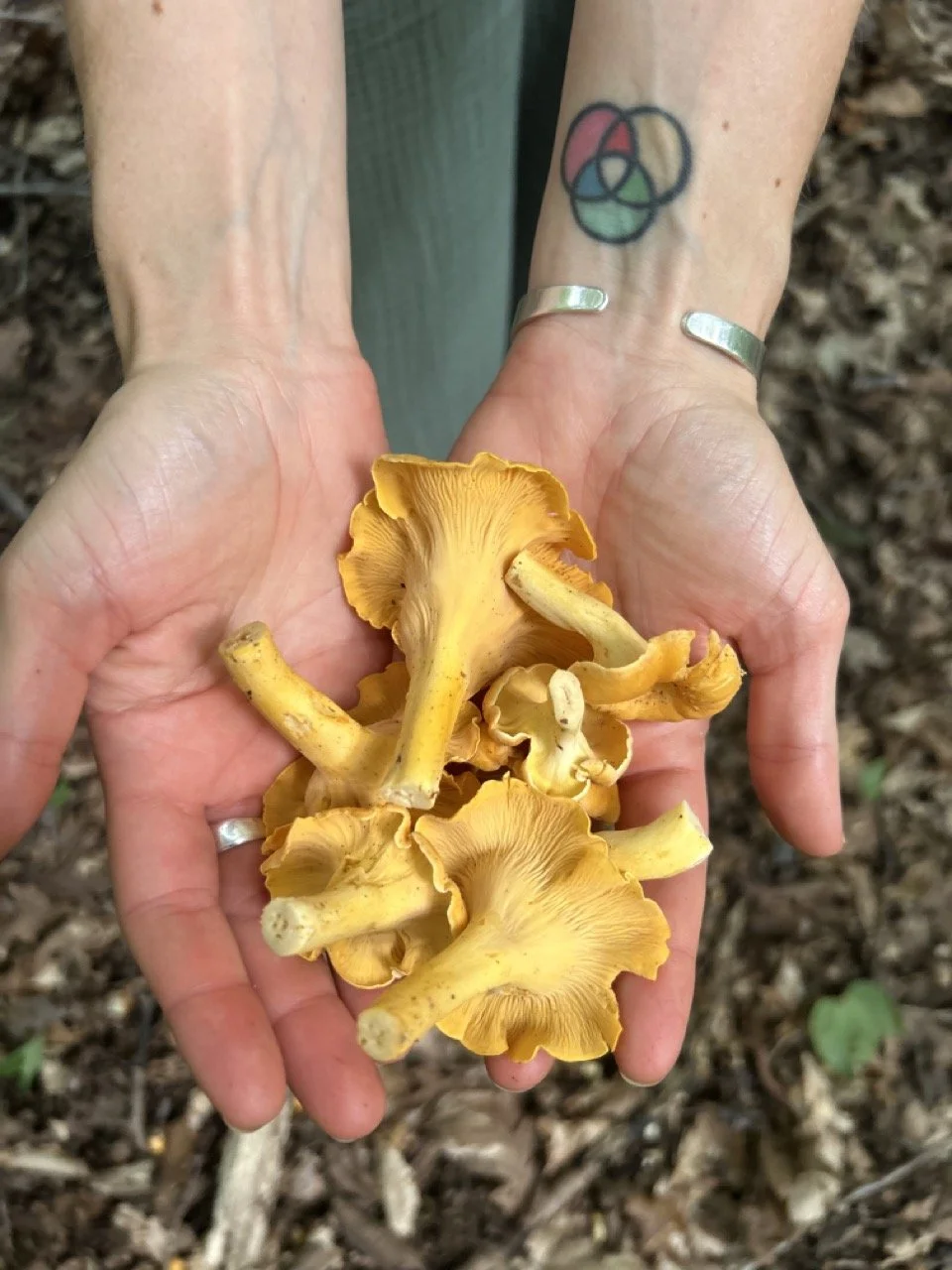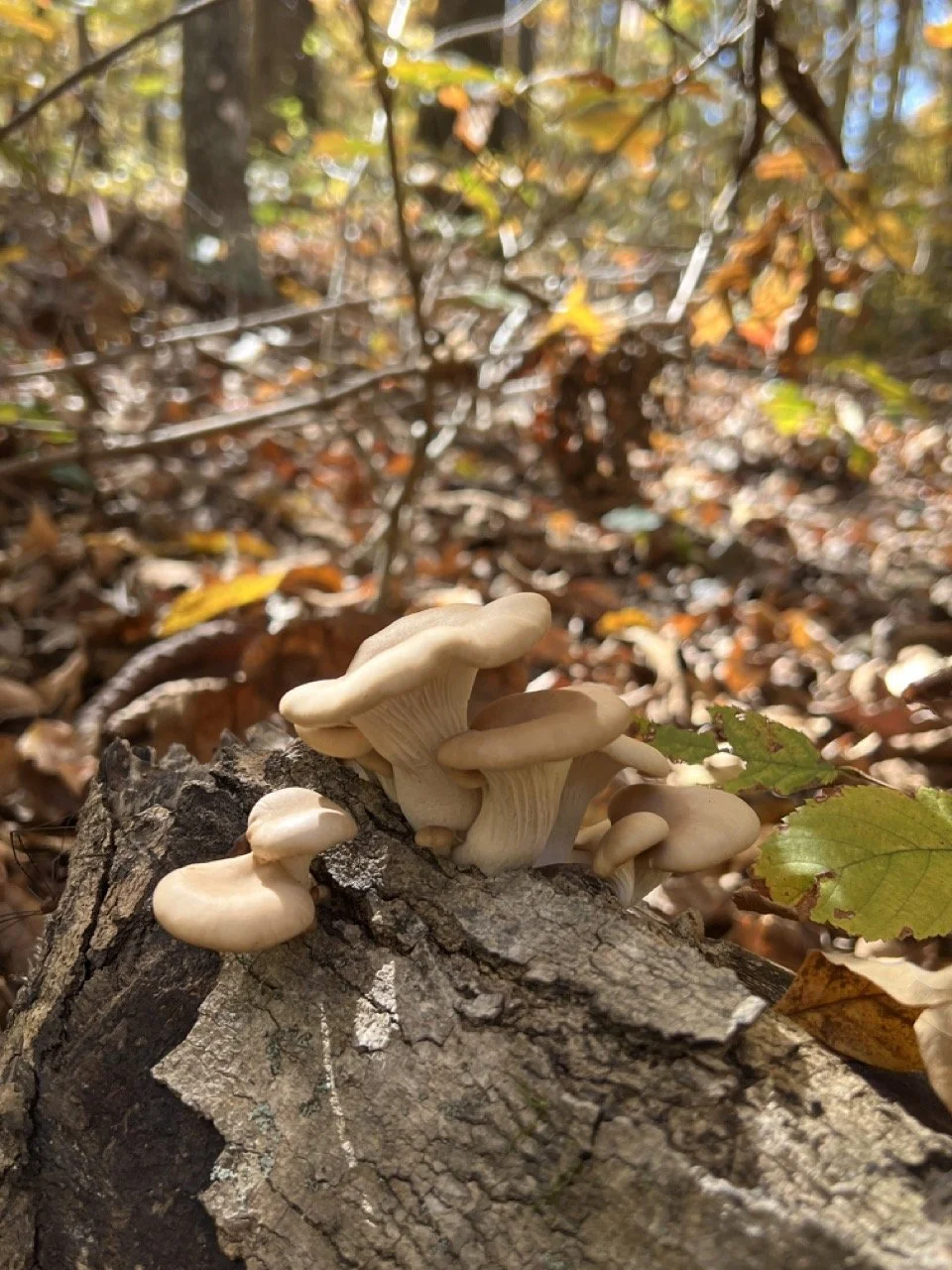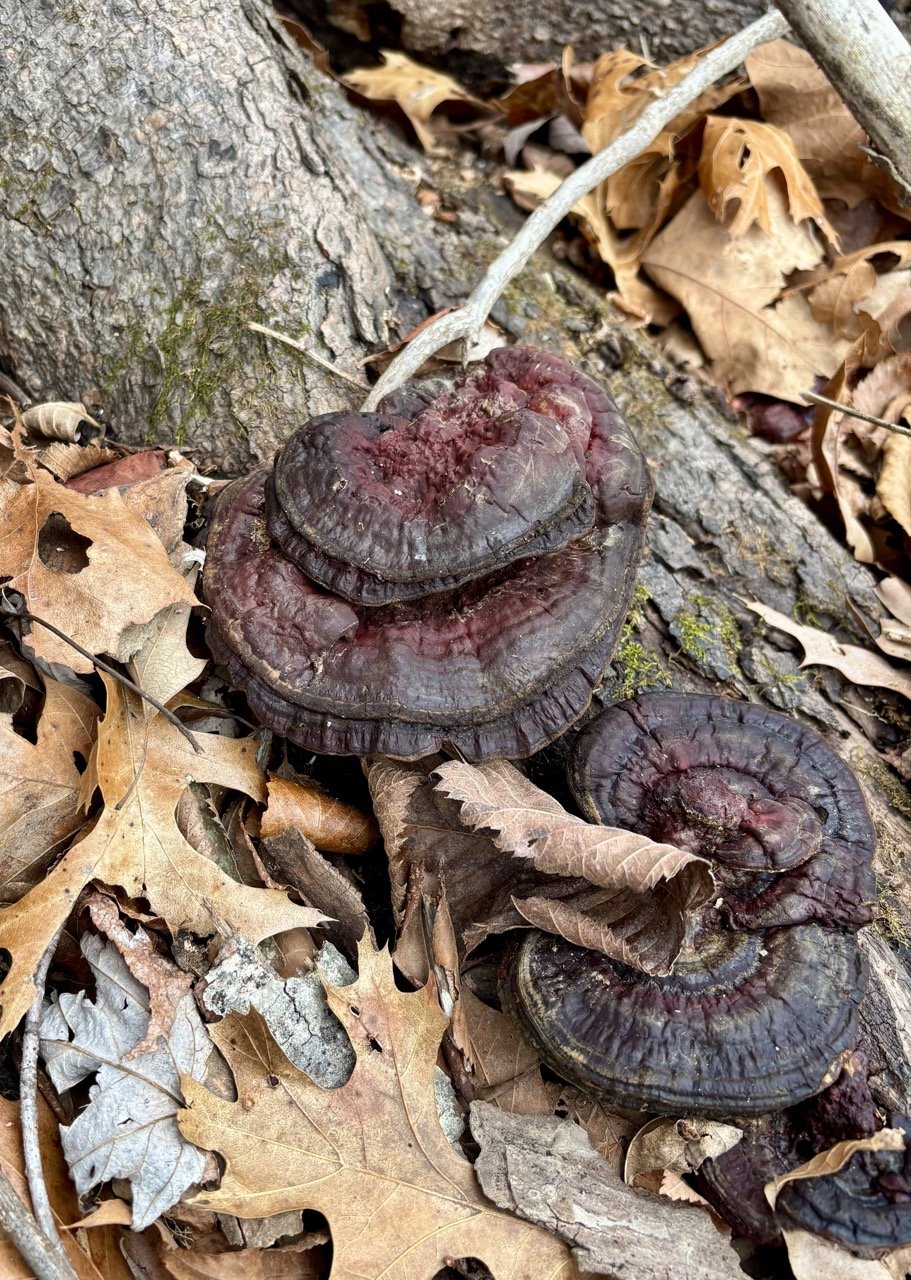Wild Mushrooms You Can Find in Tennessee This Fall
Fall in Tennessee is a magical time for mushroom enthusiasts. The crisp air, fallen leaves, and damp soil create the perfect conditions for a variety of wild mushrooms to thrive. Whether you’re a seasoned forager or just curious, the Volunteer State offers a rich bounty of edible and medicinal fungi. Here’s a guide to some mushrooms you might encounter this fall, along with the weather conditions they prefer.
1. Turkey Tail (Trametes versicolor)
Turkey Tail (Trametes versicolor)
Appearance: Thin, wavy, fan-shaped caps with concentric rings of color—brown, tan, gray, blue, or green. The underside is white with tiny pores.
Habitat: Found in dense clusters on fallen logs, stumps, and decaying hardwood.
Weather: Common throughout fall, especially after rain when humidity is high.
Notes: Not for eating, but valued for its medicinal properties—known to support immune health and gut balance.
2. Chanterelles (Cantharellus spp.)
Chanterelles (Cantharellus spp.)
Appearance: Bright golden-yellow, funnel-shaped, wavy caps, forked gills running down the stem.
Habitat: Moist hardwood forests, especially near oaks and hickories.
Weather: Thrive after warm, rainy days followed by cool nights; damp, humid soil is ideal.
Notes: Highly prized edible mushroom with a fruity aroma.
3. Hen of the Woods / Maitake (Grifola frondosa)
Hen of the Woods / Maitake (Grifola frondosa)
Appearance: Large, clustered, grayish-brown fronds forming a rosette at the base of oak trees.
Habitat: Base of mature hardwoods, especially oaks.
Weather: Appears in late summer to fall after several days of rain; prefers slightly cooler temperatures.
Notes: Delicious in soups and sautés; medicinal properties include immune support.
4. Oyster Mushrooms (Pleurotus ostreatus)
Oyster Mushrooms (Pleurotus ostreatus)
Appearance: Fan-shaped, white to gray, sometimes tinged with blue or pink. Grows in layered clusters.
Habitat: Dead or dying hardwood trees and logs.
Weather: Thrive in cool, moist conditions; often after a stretch of rainy weather.
Notes: Easy to identify, mild flavor, excellent for beginners.
5. Beech Rooter (Hymenopellis radicata)
Beech Rooter (Hymenopellis radicata)
Appearance: Tall, slender stem with a tan to gray-brown cap, sticky when moist. White to pale cream gills.
Habitat: Decaying roots or wood near beech trees.
Weather: Found after damp, rainy periods in shaded forest areas; cooler fall temperatures encourage growth.
Notes: When harvesting, gently dig around the stem to loosen soil and pull up the tap root intact.
6. Reishi (Ganoderma lucidum)
Reishi (Ganoderma lucidum)
Appearance: Shiny, reddish-brown varnished cap, woody texture, fan-shaped.
Habitat: On dead hardwoods, especially oaks.
Weather: Often appears in warm, humid conditions following late summer rains; persists through fall.
Notes: Known as the “Mushroom of Immortality,” prized for immune-boosting properties.
Foraging Tips for Tennessee Mushrooms in Fall
Enjoy the hunt, not just the harvest: You don’t have to pick or eat every mushroom you find! A walk in the woods can be just as rewarding when you focus on observing, identifying, and appreciating the incredible variety of fungi around you.
Go with a guidebook or expert: Many mushrooms have toxic look-alikes.
Here is our favorite guidebook for the southeastCheck weather and soil moisture: Fall rains after warm days bring the best mushroom growth.
Respect nature: Only harvest what you can identify and use; leave some for wildlife and spore propagation.
Tools: Basket or paper bag, small knife, and gloves if desired.
Fall is the perfect season to explore Tennessee’s forests and discover the hidden treasures of wild mushrooms. From gourmet edibles to medicinal marvels, the Volunteer State has something for every mushroom lover.






